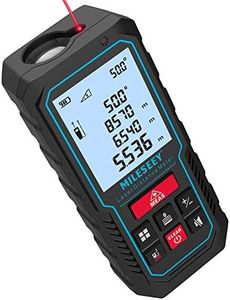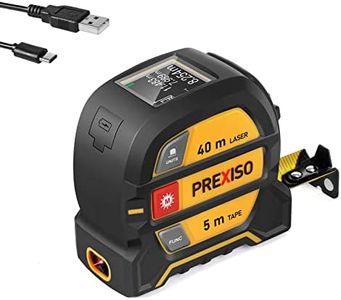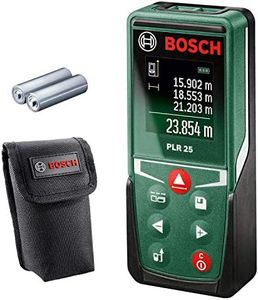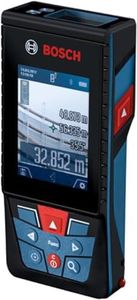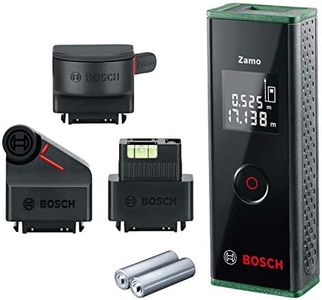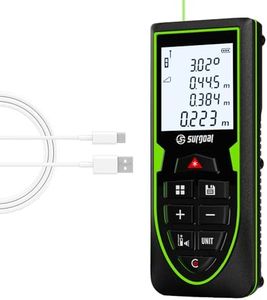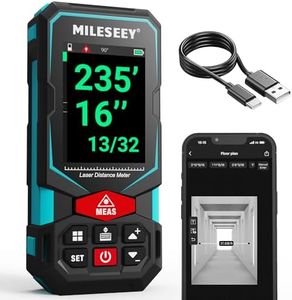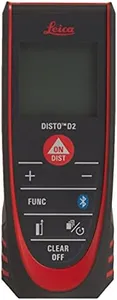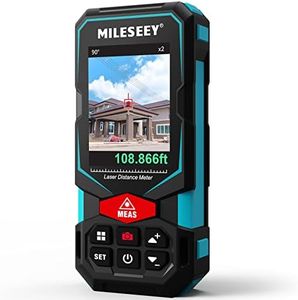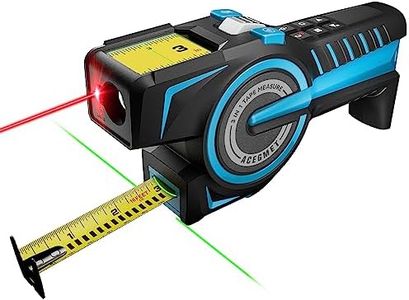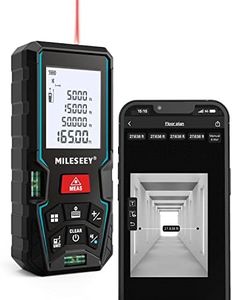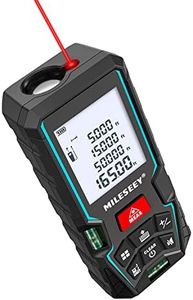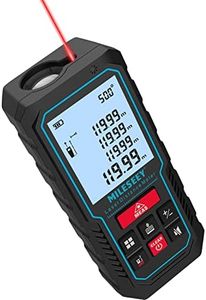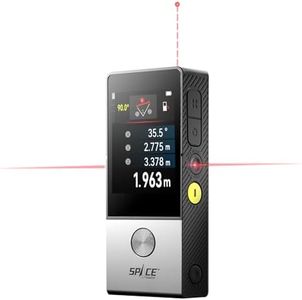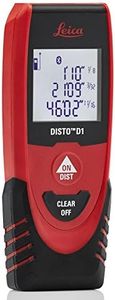We Use CookiesWe use cookies to enhance the security, performance,
functionality and for analytical and promotional activities. By continuing to browse this site you
are agreeing to our privacy policy
10 Best Laser Measurers
From leading brands and best sellers available on the web.Buying Guide for the Best Laser Measurers
Laser measurers have become a popular alternative to traditional tape measures, offering fast, precise distance readings with the push of a button. When selecting a laser measurer, the key is to focus on how and where you plan to use it. Think about whether you'll be measuring primarily indoors, outdoors, or both, what kind of distances you typically need to measure, and if you require advanced functions such as area or volume calculation. Understanding your needs will make it much easier to sort through the various features and specs to find a device that makes your measuring tasks quicker and easier.RangeRange indicates the maximum distance the laser measurer can accurately measure, usually shown in meters or feet. This spec is important because it determines how far you can take measurements — if the range is too short, you won’t be able to measure larger spaces effectively. Entry-level devices might offer a range of 10-20 meters, suitable for small rooms or simple indoor work. More advanced models can extend up to 80-100 meters or more, perfect for large rooms, outdoor projects, or construction sites. To pick the right range for you, think about the largest area you’ll need to measure, and add some extra margin to ensure your device covers all your needs.
AccuracyAccuracy tells you how close the measurement will be to the real distance, usually described as ±1 mm, ±2 mm, etc. This is critical if you’re working on precise tasks like carpentry, interior design, or installation work. Most basic models have an accuracy around ±2-3 mm, which is suitable for general use. Professional-level devices can provide greater precision — ±1 mm or even better. If you need to fit items to tight tolerances, prioritize a laser measurer with very high accuracy. For general measuring needs where exactness is less crucial, standard accuracy will be sufficient.
Display & ReadabilityThe display is how you see your measurements, and its clarity affects how easy it is to use the device. Bigger, brighter, and backlit displays are easier to read, especially in low light or outdoors. Some models show multiple measurements or calculated values at once, making it easier for complex tasks. If you often work in dim areas or direct sunlight, look for a laser measurer with a large, high-contrast display or backlighting. For basic indoor use, a simple LCD might suffice.
Measurement FunctionsMeasurement functions go beyond simple distance — many laser measurers offer area, volume, indirect (Pythagorean), continuous, and even stake-out modes. These functions are valuable if you often need to calculate space for flooring, painting, or construction estimates. Basic models might only measure distance, while advanced models include multi-function capability. Choose based on your typical tasks: if you need to quickly calculate areas or volumes or measure around obstacles, advanced functions can save you significant time and effort. For casual or simple tasks, extra modes may not be necessary.
Durability and Build QualityDurability covers how well the laser measurer holds up to rough use, drops, dust, and water. This is especially important in construction or outdoor settings. Devices often specify a level of water and dust resistance with an IP rating (like IP54), so higher numbers mean better protection. If you’ll be using your measurer in challenging environments, seek models with a rugged casing and good IP protection. For mainly indoor or office use, a basic build will normally be sufficient.
Battery Type and LifeThe power source can be standard batteries or built-in rechargeable batteries. Battery life is important if you use your laser measurer for long periods or away from power sources. Models using AA/AAA batteries can be convenient to swap out, while built-in lithium batteries often last quite long between charges and may include USB charging. Consider how long you'll use the device in a session and how often you'll need to replace or recharge the batteries to pick the best fit for your routines.
Additional FeaturesAdditional features may include Bluetooth connectivity for app support, memory to store previous measurements, tripod mounting for stability, or even voice guidance. These extras can make complicated projects faster, help keep records, or allow easy data transfer to your phone or tablet. If you anticipate organizing lots of measurements or sharing them digitally, extras like Bluetooth can be a big help. Otherwise, focus on core specs if you prefer straightforward operation.
